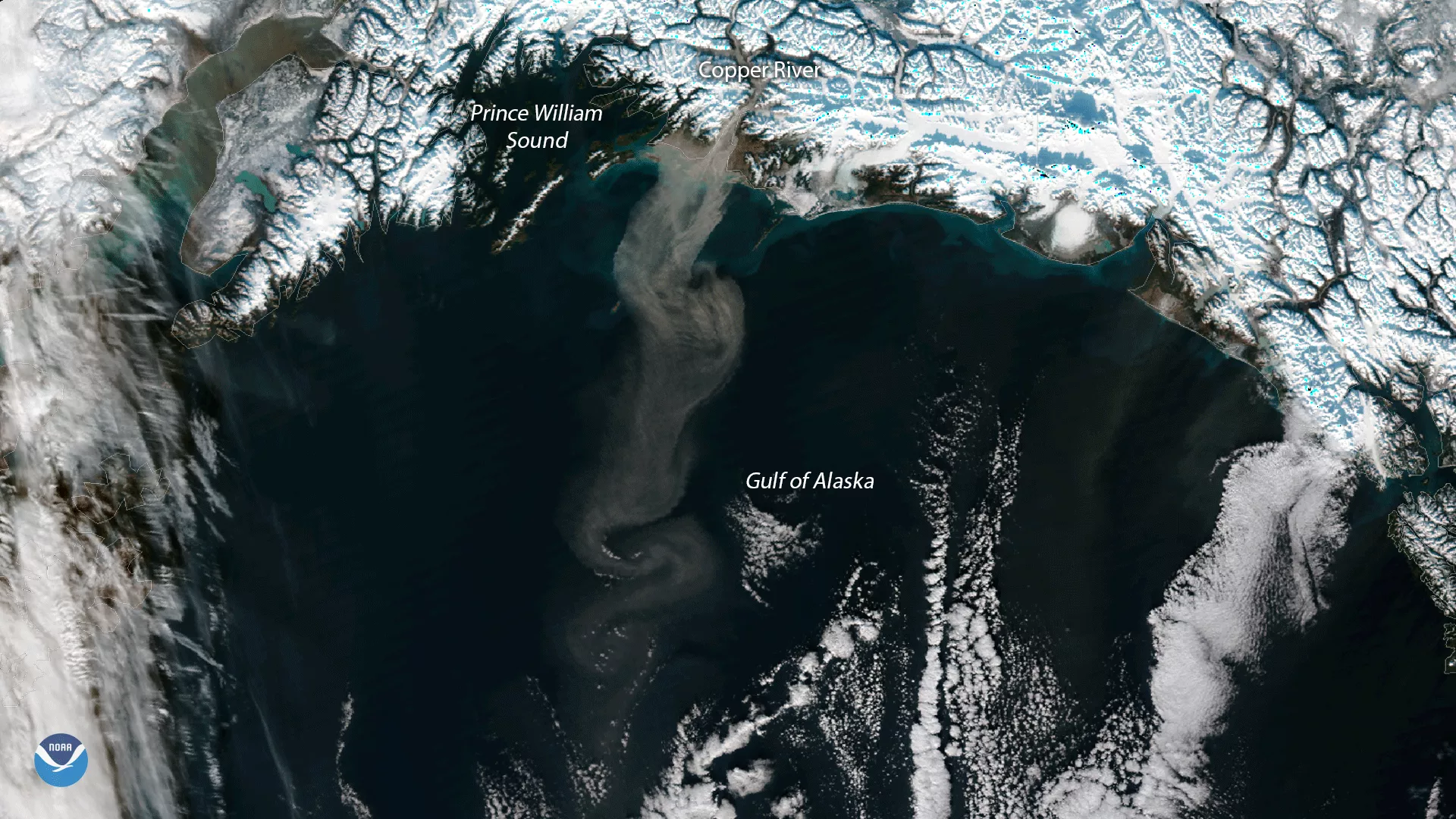
The NOAA/NASA Suomi NPP satellite’s VIIRS instrument captured this plume of glacial dust streaming into the Gulf of Alaska from the Copper River Valley. As glaciers flow, they grind against underlying bedrock, which produces a very fine powder known as “glacial flour” or “rock flour.” Rich in iron, this silty substance often flows into rivers and lakes, giving the water a brown or grey tinge. When water levels are low, the flour dries out on riverbanks and deltas. Winds then lift the dust into the air and can transport it over several hundred miles of open ocean. Researchers are using satellite data to better understand how glacial dust events in the Gulf of Alaska can trigger phytoplankton growth, which affects marine ecosystems in the region.